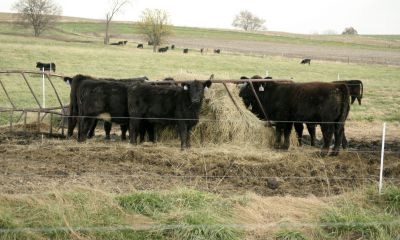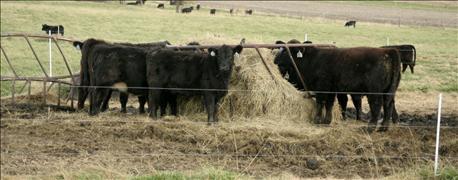
Weaning can be on one of the most stressful times for calves. According to Justin Sexten, director of supply development for Certified Angus Beef, beef producers need to alleviate stress at this stage in order to minimize shrink and give calves the best opportunity to meet their genetic potential for growth and carcass merit later.
Sexten offers the following tips to reduce stress and improve health.

1. Vaccinate calves. Beef producers may have started preparing for weaning health at branding or pre-breeding by vaccinating calves for clostridia (blackleg) and respiratory diseases. If not, consider vaccination three to four weeks prior to weaning with a booster shots at weaning, Sexten says. "Pre-weaning vaccinations in late summer can be a challenge due to summer heat or distant working facilities, so keep that in mind when discussing options with your veterinarian."
2. Provide clean water. Believe it or not, a calf's surroundings can create stress. Clean water is the most important nutrient a calf needs, according to Sexten. The facilities should have a good source of clean water readily available
3. Consider fence-line weaning. "Placing calves across the fence from the cows reduces walking and helps address the challenge of getting calves to feed and water," he notes. "Whether across the fence or farm, orient the weaning pastures and pens so the cows draw the calves to feed bunks and waterers."
4. Develop energy diet. Depending on weaning stress, calves may take one to three weeks to consume enough feed to allow weight gain beyond maintenance. "As a rule of thumb, they need to eat 2% of body weight in feed to provide enough nutrients for growth," Sexten says. If calves were creep fed, consider using the same creep feed to transition them to the post-weaning diet.
~~~PAGE_BREAK_HERE~~~
He notes that beef producers should work with a nutritionist to develop an "energy-dense feed with balanced protein sources" which will help overcome the reduced intake associated with weaning stress. "Weaning onto a vegetative pasture will provide calves with a familiar feedstuff but should be supplemented to ensure adequate nutrients for growth," Sexten adds.
5. Monitor feed intake. Paying close attention to feed intake is one of the best indicators to gage a weaning program success. Sexten recommends feeding more often in an effort to increase beef producer interaction with the calves, as well as, encouraging calves to come to the bunk. "Avoid using the self-feeder in the weaning pen until calves are started on feed, unless bunk space is limited," he adds. "Ideally, calves should have 18 inches of bunk space to ensure timid ones can get to the bunk."
Sexten finds that taking steps to minimize weaning stress now promotes long-term health, performance and carcass merit.
About the Author(s)
You May Also Like






